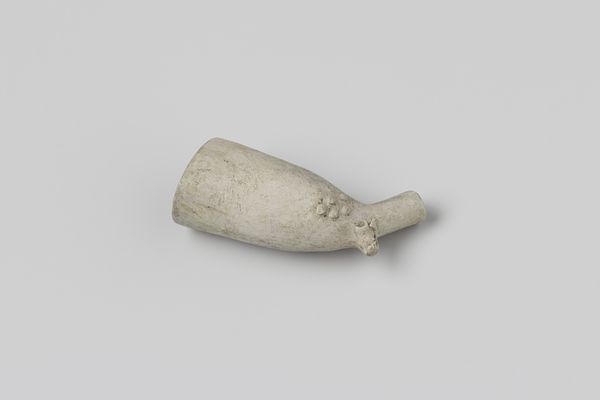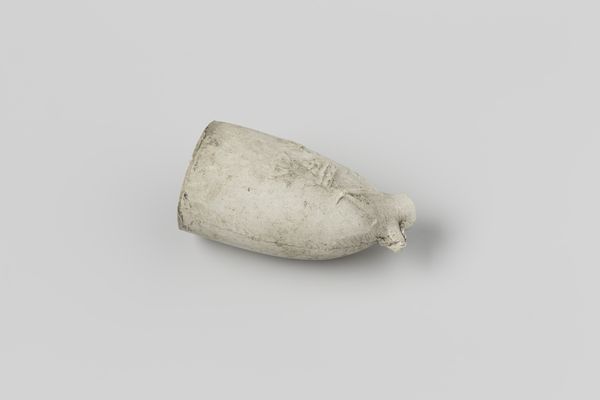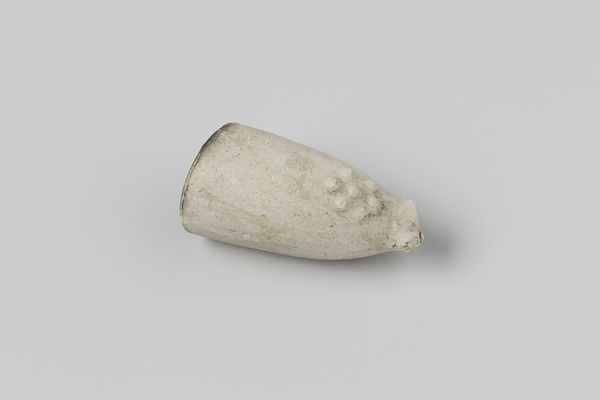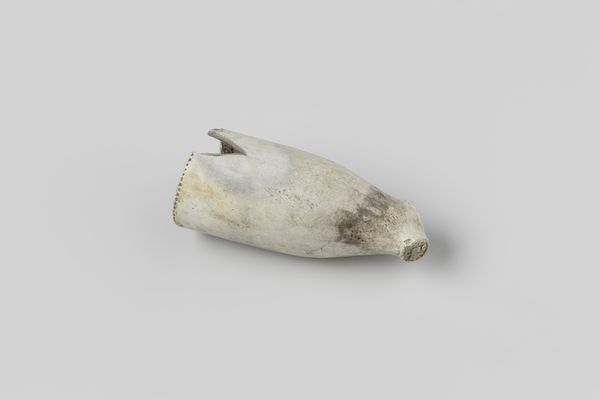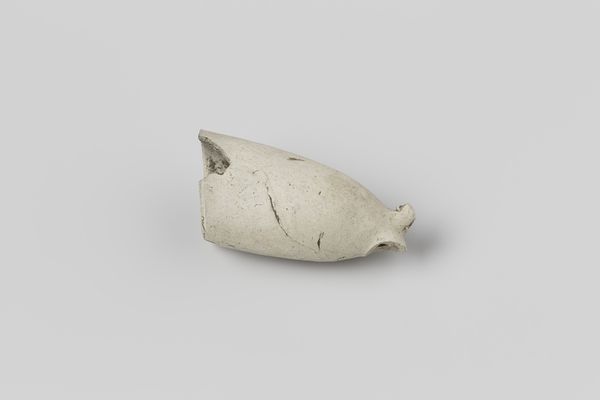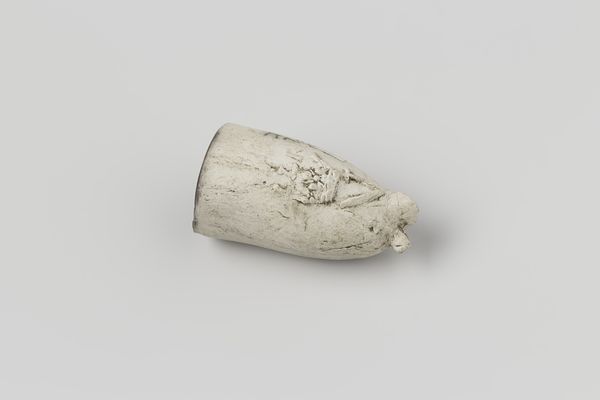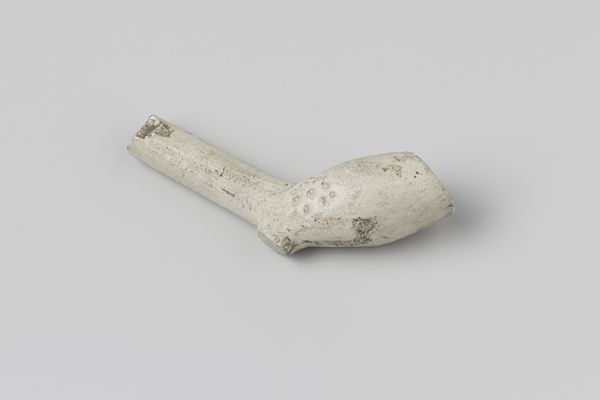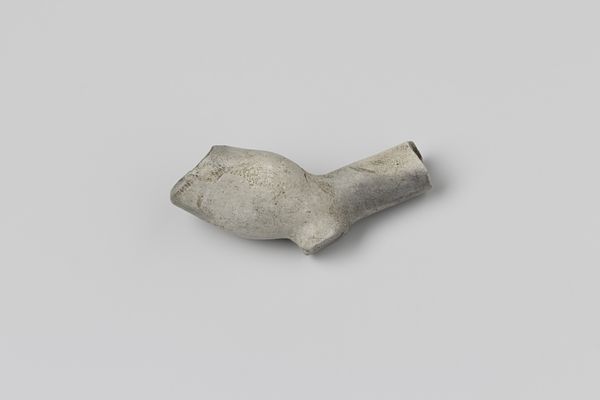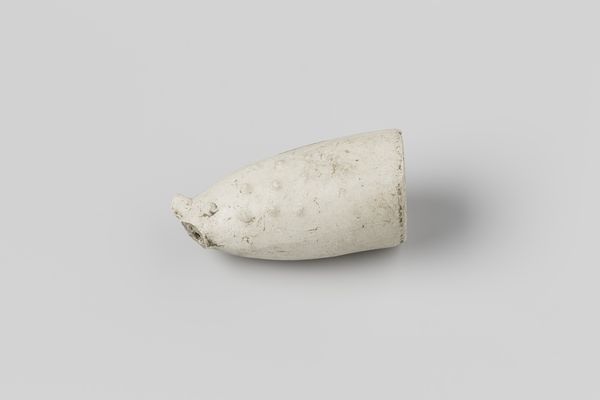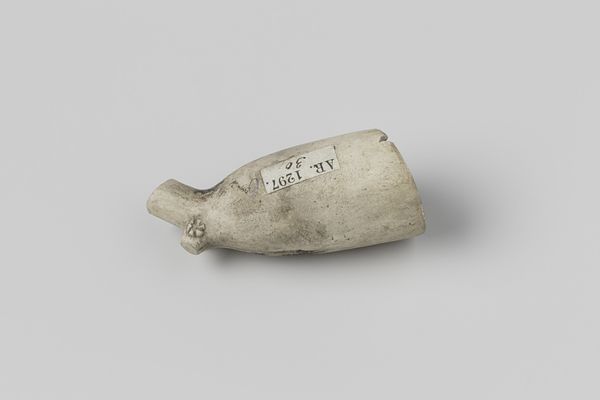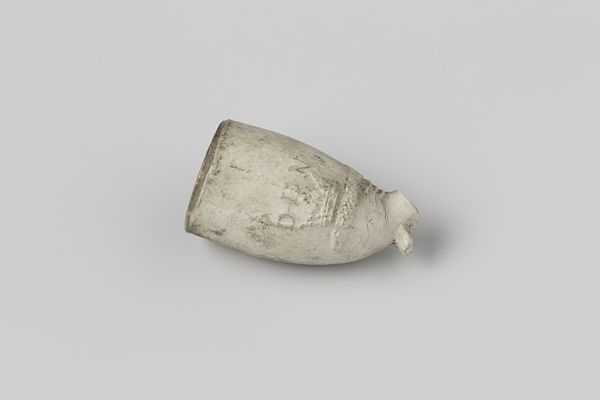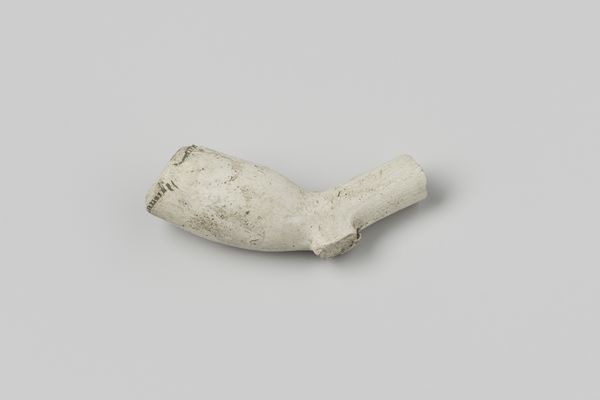
ceramic, earthenware
#
baroque
#
ceramic
#
earthenware
Dimensions: length 4.2 cm, width 1.9 cm, length 5.1 cm
Copyright: Rijks Museum: Open Domain
Curator: This unassuming object is a fragment of a tobacco pipe, dating back to the early 18th century. It’s fashioned from earthenware and reflects a wider history of global trade. What strikes you about it initially? Editor: The muted palette is the first thing, almost monochromatic. It evokes a sense of wear, of lived experience etched into the material itself. There’s a quiet dignity to it, despite its fragmentary nature. Curator: Indeed. The Baroque period is typically associated with opulent excess. How do we reconcile that with the austerity of this pipe fragment? Was this Baroque only affordable to the elite? Editor: It's a pertinent question. While grand Baroque aesthetics dominated the courts and cathedrals, objects like this pipe offer a glimpse into more ordinary lives influenced, indirectly, by broader stylistic trends. The rise of tobacco consumption, initially a luxury, becoming increasingly common reveals a socio-cultural shift. We also note that Baroque ideals about leisure, enjoyment and sensual delights penetrated other socioeconomic layers of European society through things like tobacco. Curator: The fact that it’s broken—incomplete—also impacts our reading, doesn't it? Smoking tobacco had an impact on a wide social audience as an increasing addiction that eventually took it toll on people. It makes us question what part of culture we are losing with each generation. Editor: Absolutely. The fragmentation lends it an air of vulnerability, a palpable sense of the past eroding. Perhaps the breaks also allude to the transience of earthly pleasures—even a simple one, like smoking tobacco. In the context of its time, the piece could reference the temporary, illusory nature of these sorts of Baroque indulgences, suggesting that deeper realities can be reached through spiritual practices. The image becomes a potent memento mori. Curator: Or just a reminder to not drop your pipe! Jokes aside, by exploring seemingly modest items like this, museums today play a critical role in conserving and presenting a far broader view of historical eras than that offered by conventional accounts or art. Editor: Precisely. This pipe fragment shows that even humble objects bear within them narratives about our cultural, personal, and social histories. I’ve been inspired.
Comments
No comments
Be the first to comment and join the conversation on the ultimate creative platform.
